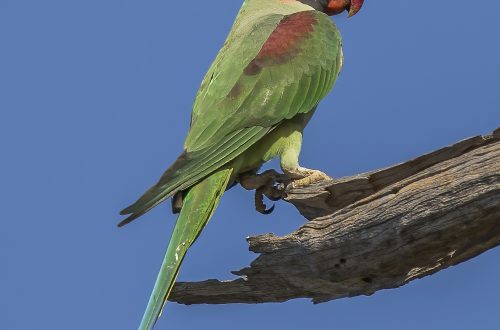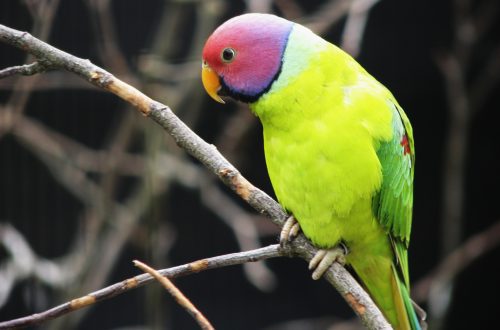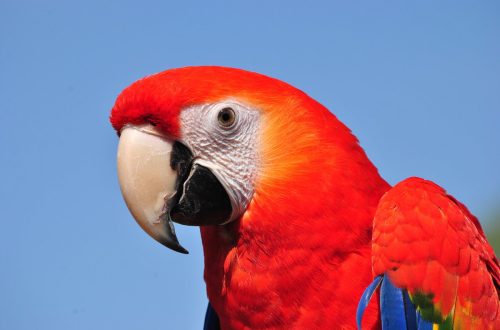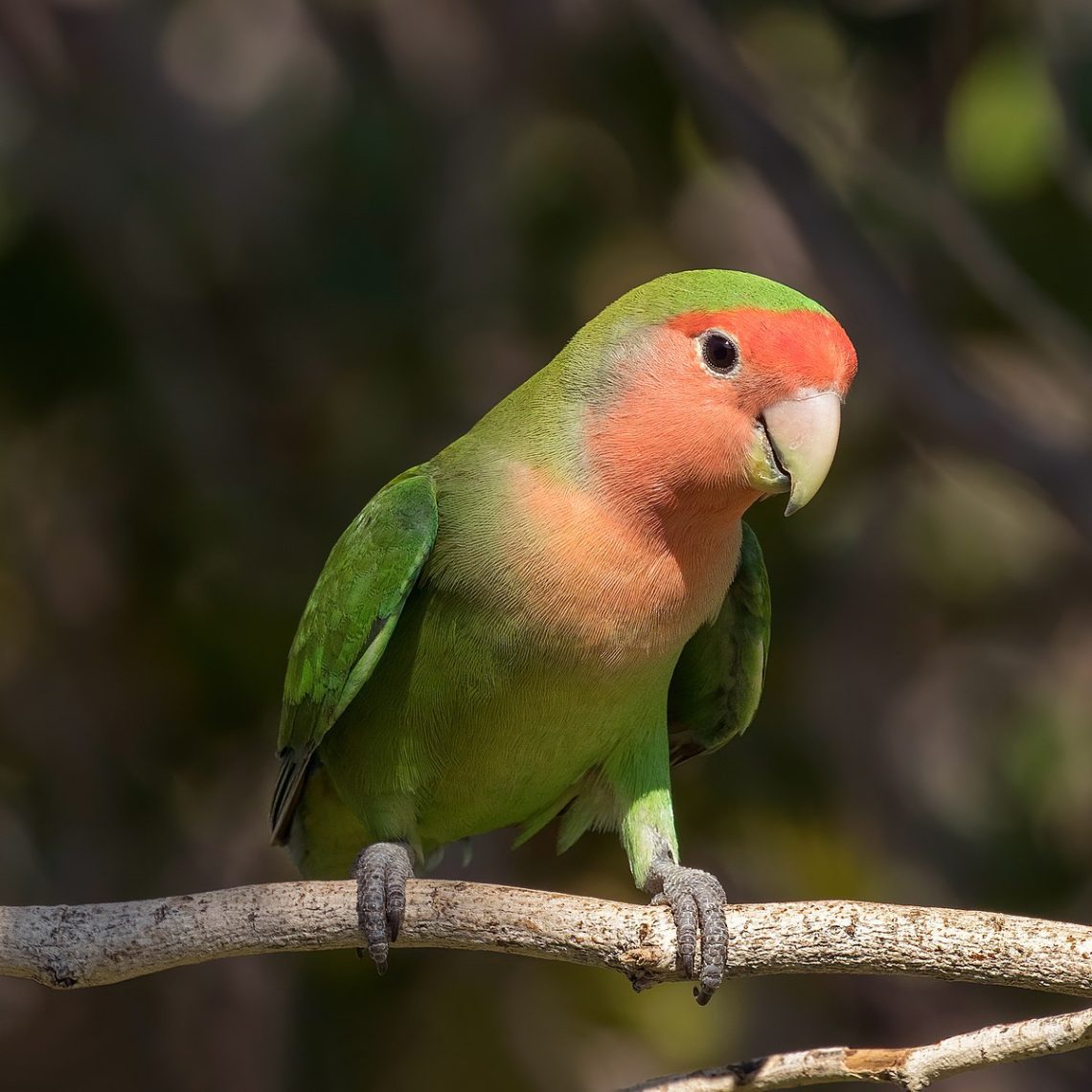
A rosy-cheeked love interest
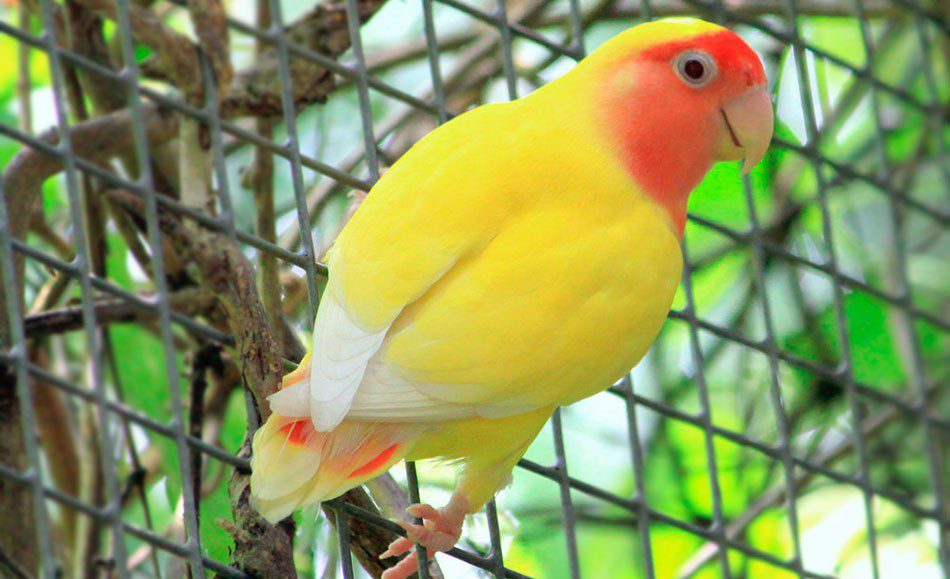

| A rosy-cheeked love interest | Agapornis roseicollis |
| Order | Parrots |
| family | Parrots |
| Race | Lovebirds |
Appearance
Small short-tailed parrots with a body length of up to 17 cm and a weight of up to 60 grams. The main color of the body is bright green, the rump is blue, the head is pink-red from the forehead to the middle of the chest. The tail also has shades of red and blue. The beak is yellowish-pink. There is a bare periorbital ring around the eyes. The eyes are dark brown. Paws are grey. In chicks, when leaving the nest, the beak is dark with a light tip, and the plumage is not so bright. Usually females are slightly larger than males, but they cannot be distinguished by color.
Life expectancy with proper care can be up to 20 years.
Habitat and life in nature
The species was first described in 1818. In the wild, pink-cheeked lovebirds are quite numerous and live in southwestern Africa (Angola, Namibia and South Africa). There are also wild populations of these birds in the United States, formed from released and flown domestic birds. They prefer to stay in flocks of up to 30 individuals near a water source, as they cannot endure thirst for a long time. However, during the breeding season, they break into pairs. Keep dry forests and savannahs.
They feed mainly on seeds, berries and fruits. Sometimes crops of millet, sunflower, corn and other crops are damaged.
These birds are very inquisitive and are almost not afraid of people in the wild. Therefore, they often settle near settlements or even under the roofs of houses.
Reproduction
The nesting season usually occurs in February – March, April and October.
Most often, a pair occupies a suitable hollow or old nests of sparrows and weavers. In urban landscapes, they can also nest on the roofs of houses. Only the female is engaged in arranging the nest, transferring building material in the tail between the feathers. Most often these are blades of grass, twigs or bark. The clutch usually contains 4-6 white eggs. Only the female incubates for 23 days, the male feeds her all this time. The chicks leave the nest at 6 weeks of age. For a while, their parents feed them.
2 subspecies are known: Ar roseicollis, Ar catumbella.





